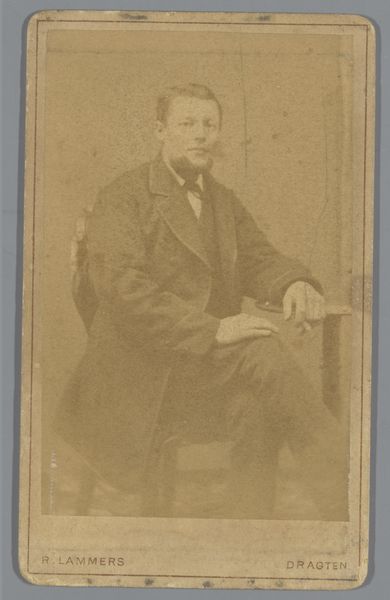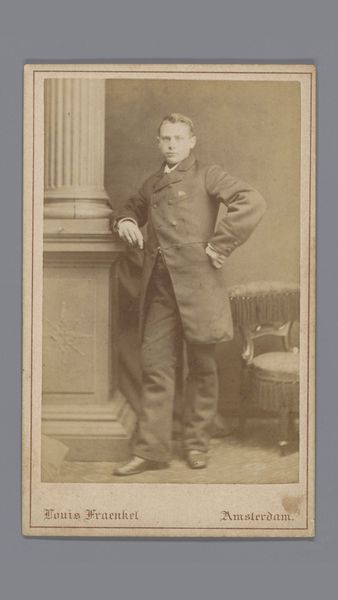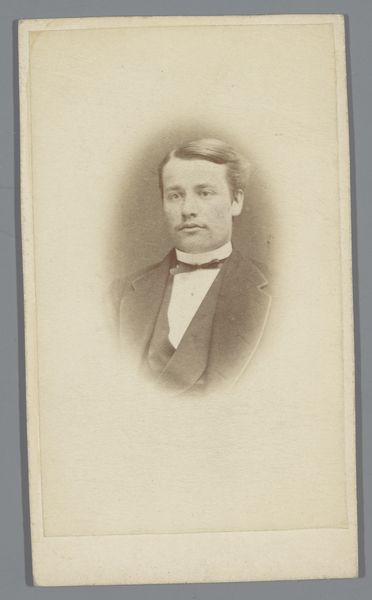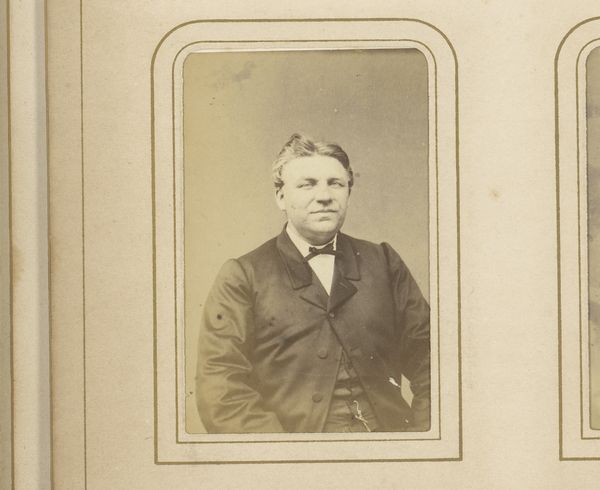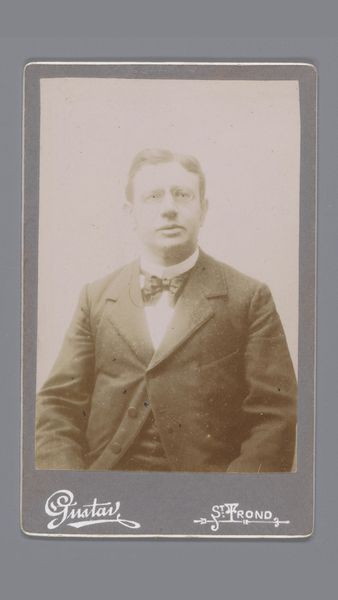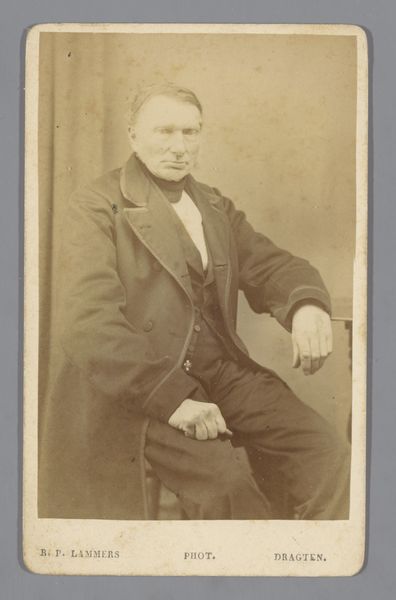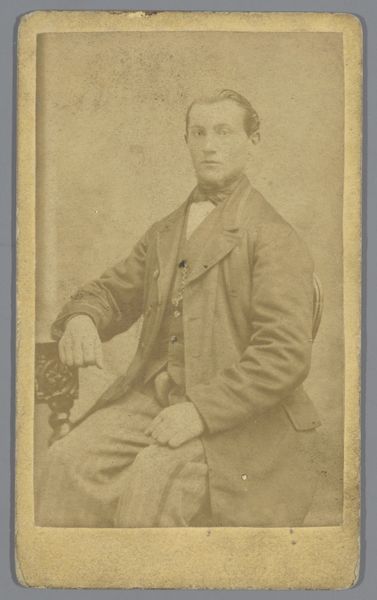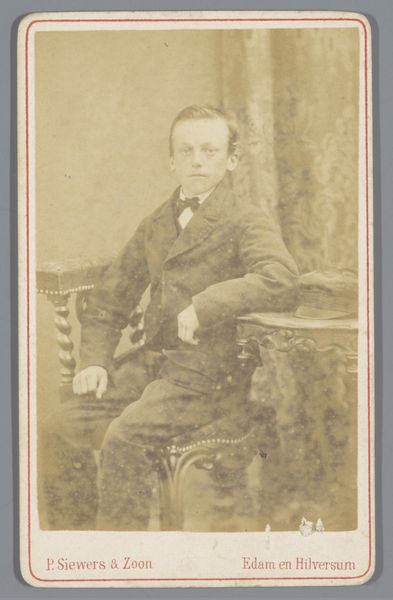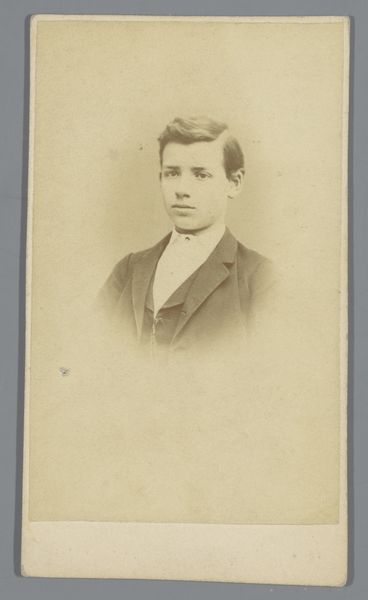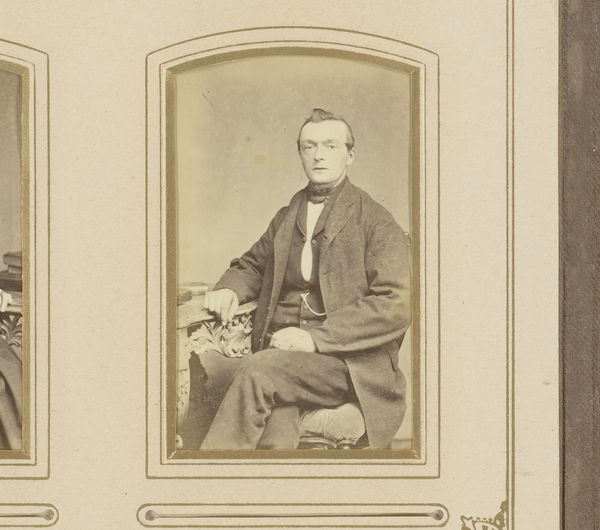
Portret van een onbekende man, zittend aan een tafel 1864 - 1880
0:00
0:00
photography, gelatin-silver-print
#
portrait
#
photography
#
gelatin-silver-print
#
realism
Dimensions: height 103 mm, width 61 mm
Copyright: Rijks Museum: Open Domain
Curator: Allow me to introduce a gelatin-silver print by Johannes Hinderikus Egenberger, likely taken between 1864 and 1880. It is titled "Portret van een onbekende man, zittend aan een tafel"—or "Portrait of an Unknown Man, Sitting at a Table." Editor: The sepia tones imbue it with a certain gravity, a sense of wistful timelessness. The subject appears calm, collected, posed—the classic photographic portrait, yes? Curator: Indeed. Note the arrangement of the subject within the frame: the angle of his body mirroring the table beside him, how his suit is similar to his hair, and the ornate chair behind him to add another shape to the image.. It seems composed for clarity of form above all. Editor: The man’s anonymity strikes me more than its geometry. "Unknown Man"—it says everything and nothing, right? We have the man himself, his clothes, the trappings of what was probably a privileged existence. But who was he beyond his class and pose? Does this erasure speak to the way history often silences so many voices, prioritizing only the famous? Curator: I'd agree in that we see the formal constraints and signifiers of that time as the goal of portraiture; the need to capture likeness rather than narrative. The realism present is directed toward a specific aesthetic goal of truthful depiction, a scientific approach of photography. The formal qualities are well met in that regard. Editor: Yes, "truthful depiction"– but only of the visible. Photography here mimics the class dynamics of the time, where visibility and representation were largely restricted to those with means. So this photo, while offering a detailed image, also obscures a deeper truth about access and power. Curator: An interesting sociohistorical reading, but let's also remember photography was not a populist medium and so would have only really portrayed this section of society at this point, as we can infer that he was well to do based on his smart clothes and sitting. It does serve as a looking glass of then society even if skewed. Editor: Exactly! These portraits, viewed collectively, serve as documents of who had the privilege to be seen, and who was actively excluded. Each portrait represents the era’s unspoken codes. It prompts crucial questions about our engagement with art. Curator: Indeed, a valuable piece offering much in the way of both formal analysis and wider consideration. Editor: Leaving me to reflect, whom do we immortalize through our gazes and how can we shift our perspective to encompass wider truths about our humanity?
Comments
No comments
Be the first to comment and join the conversation on the ultimate creative platform.
